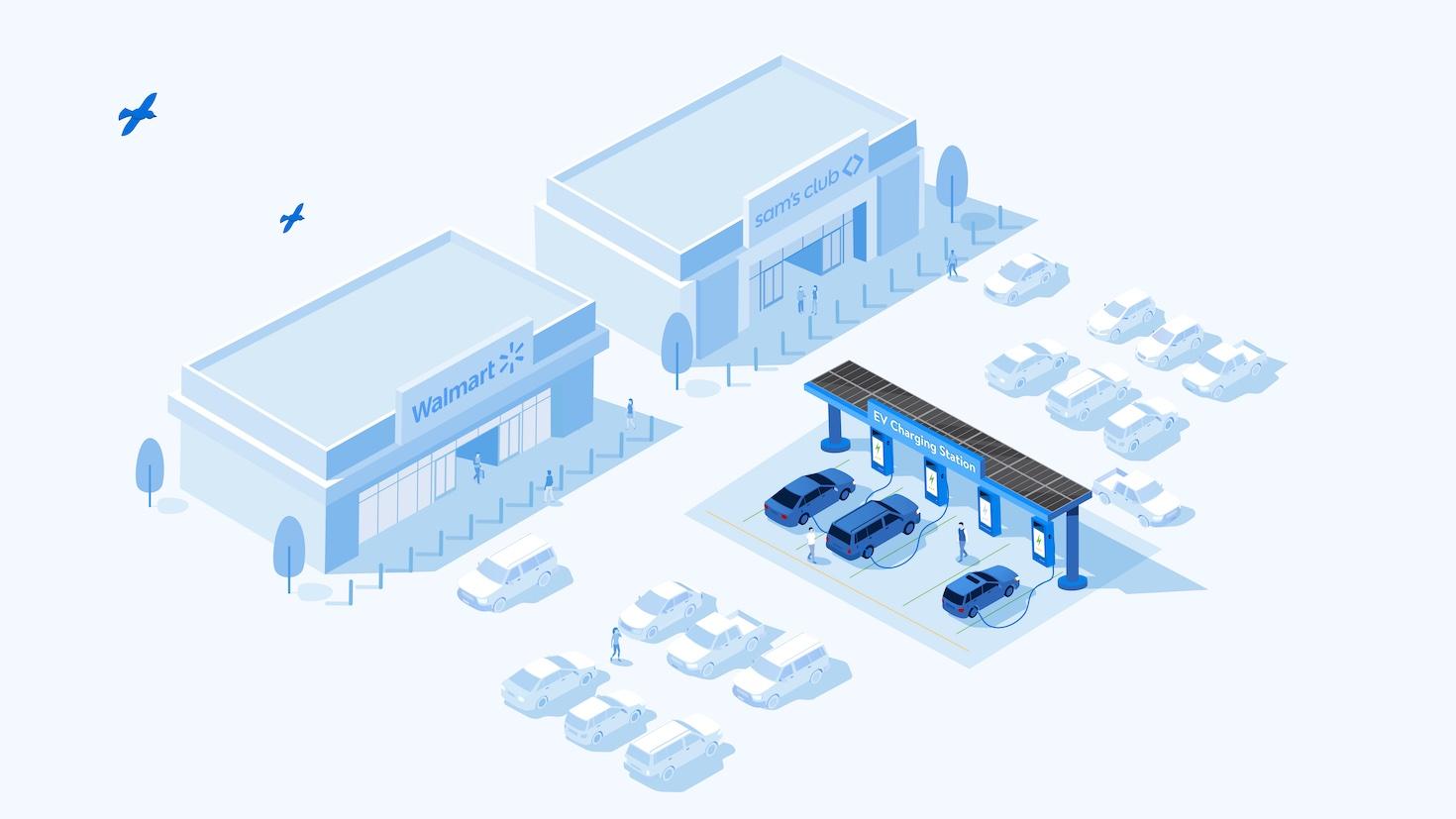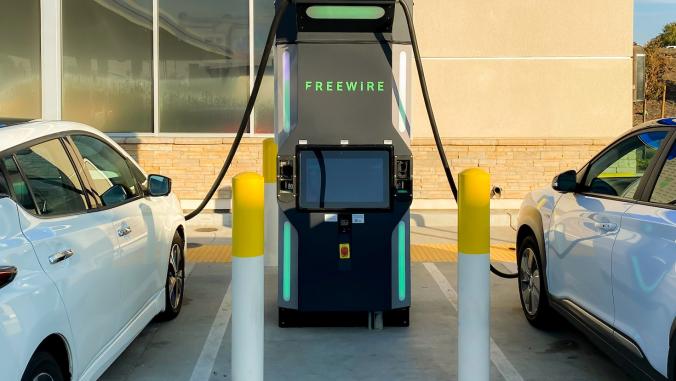Walmart Inc., the largest retailer in the U.S., is about to make a huge investment in electric vehicle charging.
The company announced in April that it will start building EV fast-charging stations at thousands of Walmart and Sam’s Club locations across the country, with the goal of completing this new charging network by 2030.
Walmart already hosts 1,300 EV fast-charging stations at 280 of its locations. A spokesperson declined to specify exactly how many more the retail giant would be adding, but estimated there would be about four new fast-chargers per site, across thousands of sites.
This massive addition of fast-chargers — which can top off an EV in less than a half-hour — has the potential to broadly increase the availability of charging stations in the country. Walmart says it has a store or club within 10 miles of 90 percent of the U.S. population. And about 70 percent of its target sites for new chargers are in low- and moderate-income communities.
"We think that’s really important as we try to reach more people with charging," said Chelle Izzi, Walmart’s vice president for energy transformation.
Walmart’s strategy for EV charging revolves heavily around affordability, something the brand is already known for. "The fact that transportation costs are such a big cost for customers and their families is a really important consideration," Izzi said.
The fast-charging expansion was motivated by this desire to save customers money, according to Izzi. She said the company hasn’t yet released details on exactly how the pricing will work, but expects it will be modeled after Walmart’s fuel stations, where Walmart+ members save 10 cents per gallon of gas.
This strategy also marks a shift for Walmart, which will transition from its current "site host" model for chargers, where third-party chargers are on Walmart property, to an owner-operated model, where Walmart designs and installs its own chargers.
"When you bring the whole weight and platform of Walmart to an EV charging experience, we can create a more seamless end-to-end experience for the customer," Izzi said. She said the company wants to design a new interface (likely, an app) that will include a charging station locator and payment processing, all in one place. Not to mention, there will be an obvious thing for drivers to do while they’re charging: Head into the store.
That being said, this new charging network will be open to the public, not solely Walmart customers. So drivers can charge while they’re shopping, or they could simply pull off the highway during a road trip, charge up and get back on their way.
So far, Walmart has issued an RFP for vendors as they prepare to break ground on this project. The company is also prioritizing which sites will be first in line for new chargers. Izzi said there are three components to that decision: Speed, where the company can move fastest to start building chargers; EV adoption, where there’s already a critical mass of EV owners; and route coverage, where the company can fill in gaps in "charging deserts," especially along highways.
Izzi said the company wants to ramp up to installing hundreds of chargers per year. But the pace of this build-out is not totally under its control. It also depends on permitting and supply chain constraints. Not to mention the capacity of local electrical grids.
"We’ve started conversations with utilities to figure out how we can work with them to move faster as well," Izzi said. "Not all the utilities are ready for all the work coming at them with all these applications."
The retailer does have a few things going for it, though.
For one, Walmart owns most of its sites. "That means we’re going to be able to move a lot faster," Izzi said, because it doesn’t have to worry about site control or acquiring land. Plus, Izzi notes that Walmart has "larger parking lots than a lot of other folks entering this space," leaving lots for expansion in the long term, which could include onsite solar or even energy storage, she said.
And as the company works toward reaching zero emissions by 2040, an expanded charging network will also be an asset for its own growing fleet of electric commercial vehicles.
"We’re going to have to develop a whole other approach for our fleet, but this is a great proving ground," Izzi said.






